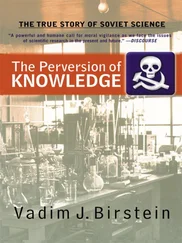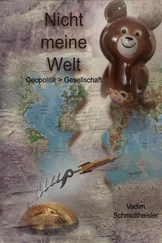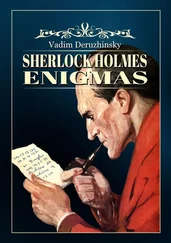Unfortunately, all these materials were published only in Russian, and so the English-reading audience interested in Soviet and World War II history, as well as many historians who work only with documents translated into English, are not aware of them.
In addition to these materials, my sources for this volume include a number of personal files of foreign prisoners that I studied at the RGVA in 1990–91; some documents that I discovered in the GARF; several incomplete SMERSH/MGB (State Security Ministry) investigation files in the United States Holocaust Memorial Museum (Washington, DC) that the Museum’s archive received from the FSB Central Archive in Moscow; numerous memoirs; NKVD history sources published primarily in Russian; and copies of prisoner cards from the Vladimir Prison Archive. Also I used documents from the archive of the Swedish Ministry for Foreign Affairs—the collection of documents on Raoul Wallenberg posted on the website of this Ministry. In the Nuremberg chapter, I cite several documents that I found in the U.S. National Archive (NARA) in Washington, DC.
I even used documents published as photos in the FSB’s coffee-table book SMERSH , reading the documents with the help of a magnifying glass. Finally, I found a great deal of useful information on several Russian websites that provide access to an enormous number of books in Russian on such topics as military history, World War II, the memoirs of GULAG survivors, and hundreds of interviews with World War II veterans collected from 2007 on. 27Almost all the materials and documents that I used in this book are available only in Russian and are new to the English-speaking audience.
If my description of SMERSH’s activities in this book seems a bit fragmentary, it is because I was only able to reconstruct so much. The SMERSH orders and reports I found are scattered throughout hundreds of sources, and it took years to find and collect them. I have translated extensive excerpts from the most important sources and included them throughout the book. I recreated the organization and work of military tribunals, the Military Collegium of the Soviet Supreme Court, and military prosecutors mostly on the basis of the recently published memoirs. Only during my work on this book were the first statistics on the activity of military tribunals during the war published. 28
Regrettably, many details are still unknown. For instance, the organizational structure of the NKVD Troops Guarding the Red Army Rear, created in May 1943 partly to support SMERSH’s activities, is still a mystery. And only the general structure of the NKGB—that is, the number and names of directorates and departments—is known. This information is important for a complete understanding of SMERSH, because NKGB officers, primarily from the 1st (intelligence) and 2nd (domestic counterintelligence) directorates, replaced SMERSH field officers in newly occupied territory, continuing arrests and interrogations while SMERSH units moved ahead with the advancing Red Army. This NKGB activity was described only in the memoirs of Anatolii Granovsky, an NKVD/NKGB officer who defected to the West in 1946. 29
While talking about World War II, it is necessary to keep in mind the enormous number of Soviet servicemen killed in that war, especially during the chaotic period that followed the German invasion in June 1941. Officially, Stalin declared that seven million Soviet citizens perished during the war, but according to some memoirs, in his inner circle he used to say that ‘30 million of our people have been killed, and of them, 20 million were [ethnic] Russians.’ 30In 2010, the General Staff of the Russian Armed Forces claimed that 8,668,000 servicemen were killed during the war, while the total losses were 26.6 million people. 31The Russian historian Boris Sokolov writes that between 26.3 and 26.9 million servicemen were killed. 32
Although this number might be an overestimate, it is obvious that the number given by the General Staff was underestimated—possibly, with the intention of making the Soviet and German losses appear equal. In fact, the Germans and their allies lost between 3 and 3.6 million servicemen at the Eastern (Russian) Front, and between 1 and 1.5 million at the Western Front, in addition to approximately 2 million civilians. In 2008, the Military-Memorial Center of the Russian Armed Forces listed the names of 16.5 million servicemen killed and about 2.4 million men missing in action. 33Comparing these figures to the 416,000 Americans killed during World War II highlights the enormity of this tragedy.
It is likely that the real extent of Soviet losses will never be known. Even 65 years after the war ended, approximately 80 per cent of archival documents about the war were still classified in Russia and, therefore, it was hard to make an independent estimation of losses. 34Also, unlike American soldiers, Russian soldiers did not have ‘dog tags’. Before the war, in March 1941, special lockers were introduced in which privates were supposed to put a note with their personal data. 35These lockers were abandoned in November 1942 because of their inefficiency. In October 1941, privates and low-level commanders began to receive special IDs similar to a passport without a photo (the high-level commanders had had such IDs from the beginning of the war) but issuing of these IDs at the fronts was not completed until July 1942. Therefore, during the first year of the war, most servicemen had no identification papers.
And even when sophisticated forensic methods of identification did become available, the Soviet—now, the Russian—state has shown little interest in identifying all the dead. As late as 2005, it was reported that at least a half a million unidentified soldiers killed during 1941–42 were thought to still be lying either unburied or buried in unmarked graves in Russian forests. 36
The publication of this book is especially timely now, because the present Russian government seems intent on whitewashing Stalin’s atrocities and the history of the Soviet security services. Since Vladimir Putin (a former KGB lieutenant colonel and then FSB head before becoming Russian president) came to power in 2000, siloviki (‘men of power’) with mostly KGB backgrounds have taken over key positions in government and business. They call themselves ‘Chekists’—followers of the first Bolshevik security service, the CheKa ( Chrezvychainaya komissiya or Extraordinary Commission), created in 1918 under Felix Dzerzhinsky’s command, to unleash the first wave of Soviet repression and persecution, the Red Terror. This group is also known today as the Corporation or Brotherhood . In February 2009, Andrei Illarionov, a former Putin adviser and now the leading Russian-opposition economist, testified before the American House Committee on Foreign Affairs: ‘The members of the Corporation do share strong allegiance to their respective organizations, strict codes of conduct and of honor, basic principles of behavior, including among others the principle of mutual support to each other in any circumstances and the principle of omerta .’ 37These people see themselves as the descendants of the NKVD/SMERSH/MGB and are proud of those agencies. The Economist dubbed the current Russian regime the ‘spookocracy’. 38
To burnish their image, the current secret services have begun to connect themselves with Russia’s imperial past. 39This process has coincided with an enormous increase in the number of new books glorifying Stalin and his epoch. For instance, during 2010 and early 2011, about 60 books praising Stalin and his administration, compared to 21 serious history books about Stalin’s time, were published in Russia. 40In the spring of 2007, Russian TV (NTV channel) showed a forty-episode series, Stalin Alive , in which Stalin is depicted as a repentant intellectual. Even the sinister Beria, NKVD Commissar from 1938 until 1946, whose name was synonymous with terror in the Soviet Union, is portrayed as ‘the best manager of the 20th century’. There is nothing about his cruel atrocities in his official biography given on the FSB website. 41
Читать дальше












